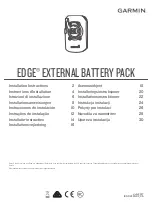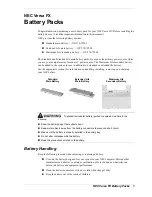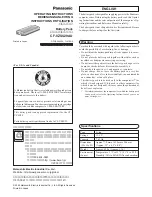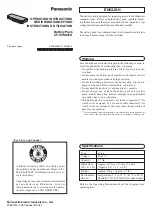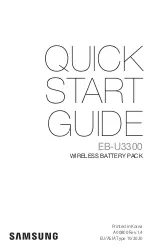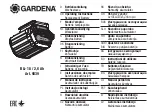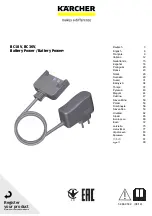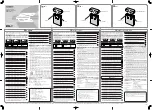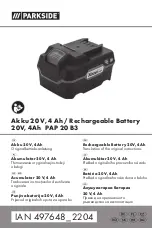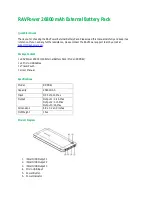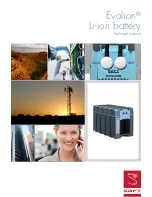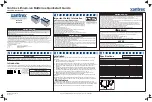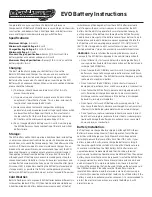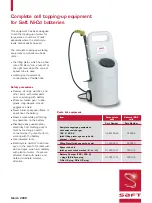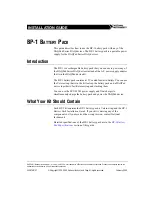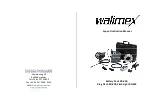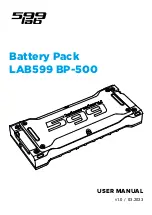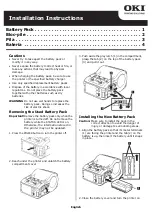
A
English
English (original instructions)
Protecting the Environment
w
Separate collection. Products and batteries marked
with this symbol must not be disposed of with normal
household waste.
Products and batteries contain materials that
can be recovered or recycled reducing the demand for raw
materials. Please recycle electrical products and batteries
according to local provisions. Further information is available at
www.2helpU.com
.
Rechargeable Battery Pack
This long life battery pack must be recharged when it fails
to produce sufficient power on jobs which were easily done
before. At the end of its technical life, discard it with due care for
our environment:
• Run the battery pack down completely, then remove it from
the tool.
• Li‑Ion cells are recyclable. Take them to your dealer or a
local recycling station. The collected battery packs will be
recycled or disposed of properly.
The information provided in this section of the manual is
provided in good faith and believed to be accurate at the time
the document was created. However, no warranty, expressed or
implied, is given. It is the buyer’s responsibility to ensure that its
activities comply with the applicable regulations.
Transporting the FlEXVOlT
TM
Battery
The
D
e
WALT
FLEXVOLT
TM
battery has two modes:
Use
and
Transport
.
Use Mode:
When the FLEXVOLT
TM
battery stands alone or is in
a
D
e
WALT
18V product, it will operate as an 18V battery. When
the FLEXVOLT
TM
battery is in a 54V or a 108V (two 54V batteries)
product, it will operate as a 54V battery.
Transport Mode:
When the cap is attached to the FLEXVOLT
TM
battery, the battery is in Transport mode. Keep the cap
for shipping.
When in Transport mode, strings
of cells are electrically
disconnected within the pack
resulting in 3 batteries with a
lower Watt hour (Wh) rating as compared to 1 battery with a
higher Watt hour rating. This increased quantity of 3 batteries
with the lower Watt hour rating can exempt the pack from
certain shipping regulations that are imposed upon the higher
Watt hour batteries.
For example, the Transport
Wh rating might indicate
3 x 36 Wh, meaning
3 batteries of 36 Wh each.
The Use Wh rating might
indicate 108 Wh (1 battery implied).
Example of Use and Transport Label Marking
Transportation
WARNING: Fire hazard.
Transporting batteries can
possibly cause fire if the battery terminals inadvertently
come in contact with conductive materials. When
transporting batteries, make sure that the battery
terminals are protected and well insulated from
materials that could contact them and cause a short
circuit.
NOTE:
Lithium‑ion batteries should not be put in
checked baggage.
batteries comply with all applicable shipping regulations as
prescribed by industry and legal standards which include UN
Recommendations on the Transport of Dangerous Goods;
International Air Transport Association (IATA) Dangerous
Goods Regulations, International Maritime Dangerous Goods
(IMDG) Regulations, and the European Agreement Concerning
The International Carriage of Dangerous Goods by Road
(ADR). Lithium‑ion cells and batteries have been tested to
section 38.3 of the UN Recommendations on the Transport of
Dangerous Goods Manual of Tests and Criteria.
In most instances, shipping a battery pack will be excepted
from being classified as a fully regulated Class 9 Hazardous
Material. In general, only shipments containing a lithium‑ion
battery with an energy rating greater than 100 Watt Hours
(Wh) will require being shipped as fully regulated Class 9. All
lithium‑ion batteries have the Watt Hour rating marked on
the pack. Furthermore, due to regulation complexities, does
not recommend air shipping lithium‑ion battery packs alone
regardless of Watt Hour rating. Shipments of tools with batteries
(combo kits) can be air shipped as excepted if the Watt Hour
rating of the battery pack is no greater than 100 Wh.
Regardless of whether a shipment is considered excepted
or fully regulated, it is the shipper's responsibility to consult
the latest regulations for packaging, labeling/marking and
documentation requirements.
Summary of Contents for DCB124
Page 4: ...530915 40 RUS UA 12 20 ...





